Destinations & Things To Do
Andaman’s Hidden Gems: Four Natural Wonders Set To Shine As UNESCO Heritage Sites, Boosting Eco Tourism and Global Travel: Read More About It Now
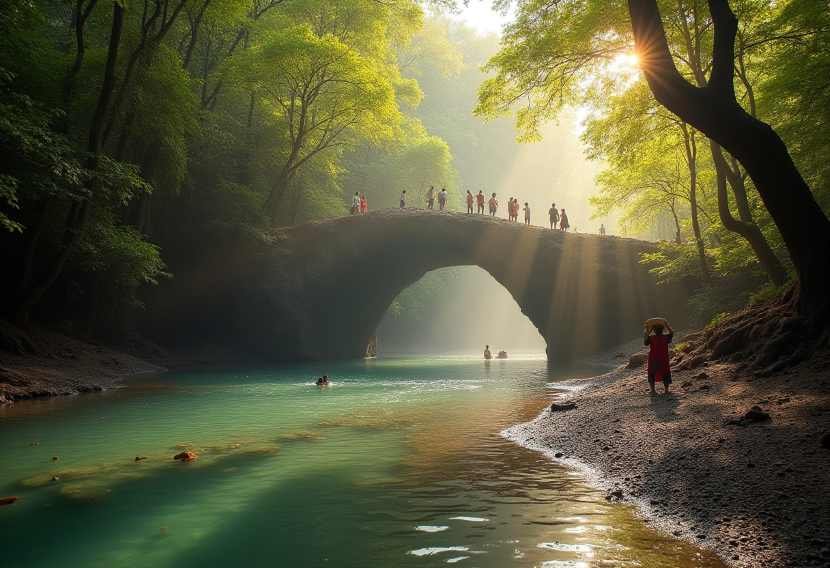
Wednesday, July 30, 2025
The Andaman and Nicobar Islands, a pristine archipelago located in the Bay of Bengal, are making a concerted push to enhance their position on the global tourism map. The Union Territory administration has formally proposed four of its unique natural landmarks for inclusion in the Tentative List of UNESCO World Heritage Sites. This move is not only an effort to preserve and highlight the region’s geological and ecological richness but also a strategy to drive sustainable tourism and create economic opportunities for the local communities.
The proposal includes four stunning sites that reflect the Andaman Islands’ biodiversity, geological uniqueness, and cultural significance: Barren Island, Narcondam Island, Baratang’s Mud Volcanoes, and Shaheed Dweep’s Natural Bridge. Together, these landmarks have the potential to transform the region into a significant eco-tourism hub, attracting international travelers seeking immersive, responsible travel experiences.
1. Barren Island: India’s Only Active Volcano
Barren Island, located about 138 km northeast of Port Blair, is renowned as India’s only active volcano and one of the few active volcanic sites in South Asia. The island’s stark, barren landscape—dominated by volcanic cones, ash fields, and sparse vegetation—is surrounded by crystal-clear waters and coral reefs, making it a must-visit for those interested in geo-tourism and adventure tourism.
For years, Barren Island has remained a largely inaccessible destination for tourists due to its remote location and the volatility of the volcano. However, with increased tourism infrastructure and sustainability measures in place, it is now being considered for UNESCO World Heritage status, which would significantly elevate its profile as a geo-tourism destination. Its raw, rugged terrain and volcanic activity make it a fascinating site for scientific research and adventure tourism, providing visitors with a once-in-a-lifetime opportunity to explore a volcanic environment.
With sustainable eco-tourism development, Barren Island could become a popular attraction for eco-tourists, adventure seekers, and nature enthusiasts who are keen to witness the forces of nature at work in one of India’s most unique geological sites.
2. Narcondam Island: Home to the Rare Narcondam Hornbill
Another prime candidate for UNESCO World Heritage status is Narcondam Island, located about 240 km from Port Blair. Known for its biological significance, this volcanic island is home to the endangered Narcondam Hornbill, a species found nowhere else in the world. The island’s lush, dense forests and diverse wildlife make it a paradise for birdwatchers and ecologists, drawing increasing interest from wildlife tourism enthusiasts.
Narcondam Island is a sanctuary for the Narcondam Hornbill, which is currently protected under India’s Wildlife Protection Act and listed as an endangered species by the International Union for Conservation of Nature (IUCN). The island’s isolation has allowed its biodiversity to remain largely untouched by human activity, making it an important area for conservation and scientific study.
As global wildlife tourism continues to grow, the island offers a unique eco-tourism experience for travelers looking to explore untouched habitats and contribute to conservation efforts. Its UNESCO recognition would highlight the island’s ecological importance while bringing sustainable tourism practices to the forefront of the region’s development.
3. Baratang’s Mud Volcanoes: A Potential Wellness and Eco-Tourism Hub
Located in the Andaman Islands, Baratang is home to a remarkable geological feature—mud volcanoes. This area, characterized by dense mangroves, tranquil beaches, and unique natural phenomena, has the potential to become a wellness and eco-tourism destination, similar to South Korea’s Jeju Island. The mud volcanoes, which occasionally erupt mud and gases, offer visitors an extraordinary opportunity to witness tectonic activity and learn about the geological processes beneath the earth’s surface.
Baratang’s mud volcanoes provide an exciting educational experience for tourists, with the opportunity to witness the raw power of nature in a safe and controlled manner. The island’s unique ecosystem also attracts nature lovers and eco-tourists, while the potential to develop wellness retreats and eco-friendly accommodations could make Baratang a sought-after destination for those seeking nature-based wellness experiences.
The island’s geological significance combined with its untouched natural beauty provides an ideal setting for sustainable tourism development, offering both environmental conservation and economic benefits to local communities.
4. Shaheed Dweep’s Natural Bridge: A Scenic Trekker’s Delight
The Natural Bridge at Shaheed Dweep (formerly known as Neil Island) is a stunning natural arch formation that has become a popular trekking destination in the Andaman Islands. Accessible via a short forest trek, the Natural Bridge is a popular attraction for trekkers, nature lovers, and adventure tourists. The arch formation, known locally as Howrah Bridge, offers a unique scenic experience, attracting visitors who want to explore the island’s rich biodiversity and scenic landscapes.
With its pristine beaches and lush forests, Shaheed Dweep offers visitors a chance to immerse themselves in the untouched beauty of the Andaman Islands. The island’s eco-tourism potential is significant, especially with its blend of nature trails, birdwatching spots, and beach activities. The Natural Bridge itself is a perfect spot for photography and sightseeing, providing a perfect combination of adventure and nature-based tourism.
By securing UNESCO World Heritage status, the Natural Bridge could be elevated as a top eco-tourism destination, attracting global travelers while ensuring its preservation through sustainable tourism practices.
Economic Impact and Tourism Development in the Andaman & Nicobar Islands
The proposal to add these four remarkable sites to the UNESCO World Heritage Tentative List is not only a milestone in environmental conservation but also a vital step toward enhancing tourism infrastructure in the Andaman & Nicobar Islands. With the right focus on sustainable tourism practices, these natural wonders have the potential to drive increased international visitation, attracting travelers who are eager to explore off-the-beaten-path destinations and engage in eco-friendly travel.
As the Andaman Islands continue to develop their tourism industry, the local economy stands to benefit significantly, with opportunities for job creation, improved infrastructure, and a boost to the hospitality sector. At the same time, preserving these areas for future generations ensures that eco-tourism remains at the heart of the islands’ development.
Conclusion: A Vision for Sustainable Eco-Tourism
The Andaman & Nicobar Islands’ proposal for UNESCO recognition is an essential step in making the region a global destination for eco-tourism and geo-heritage tourism. These four sites—Barren Island, Narcondam Island, Baratang Mud Volcanoes, and the Natural Bridge at Shaheed Dweep—are not only geological wonders but also key to shaping a sustainable tourism model that blends natural preservation with local economic growth.
With UNESCO World Heritage recognition, these sites will gain international recognition, contributing to local conservation efforts and ensuring that future generations can enjoy these extraordinary places. The Andaman & Nicobar Islands stand on the brink of becoming a must-visit destination for eco-conscious travelers seeking adventure, sustainability, and natural beauty.
Destinations & Things To Do
PCT SOBO DAY 28 – A Sluggish Day
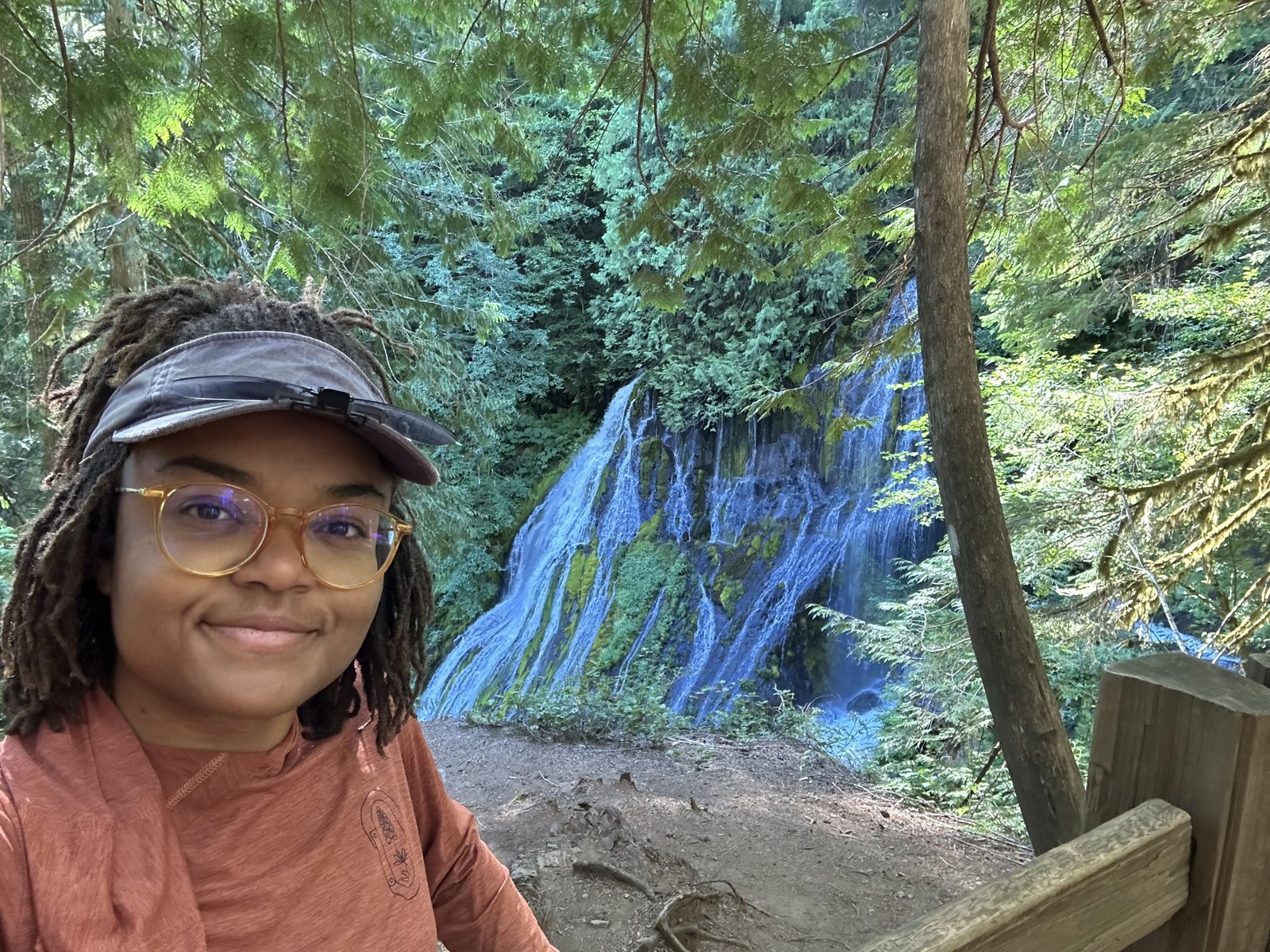
Day 28
Start: Stealth Site, mile 443.7
End: Tentsite, mile 470.5
Miles hiked: 21.6 miles, 26.8 trail miles
After our headache of a night last night, Sun and I slept in a bit and didn’t leave camp until around 7:30. The mosquitoes were a bit better this morning; they didn’t attack us with as much fervor as yesterday, even when we stopped for water at a lake.
The lake, Junction Lake, was such a serene place. Little baby ducks swam in groups across the water while the morning sun warmed the air. At one point, the mother duck came squawking in, flying this way and that way across the pond, throwing water in all directions. I’m not quite sure what the drama was about, something to do with the baby ducks, but eventually it was resolved since the squawking stopped.
This morning, Sun and I were moving pretty slowly. We were both tired from the night before. My pack felt unusually heavy and I missed the spring I had in my step on that first day out of town. A couple of miles later we reached Blue Lake, but it was a bit too early, cool, and windy for a swim. It was a beautiful spot though. The NOBOs we passed said it was an excellent swimming spot.
Sun and I climbed slowly up, taking a lot of breaks, almost one every 1.5-2 miles, which wasn’t really our style. I guess we had bitten off more than we could chew yesterday. We topped our climb of the morning and enjoyed the snippets of cell service and the warmth of the sun.
Then it was miles of downhill, passing a few NOBOs on the way. Our progress was further slowed by the huckleberries that lined the trail; I got a bit behind because they were so good!
We finally reached a parking lot with picnic tables and a pit toilet and decided it was the perfect place for lunch. Sun was hoping that we would find trail magic again, but no such luck despite all the cars that passed by on the gravel road. Lunch felt a bit more civilized this time since we had real tables to eat at instead of a bare patch of ground. Out big debate was whether to continue 12 miles on the trail to reach our goal campsite or take the 10.5 Panther Creek road walk alternate. If we walked the trail, we would have to climb with a long water carry and dry camp. But if we took the road, we could save a few miles and camp with water. We couldn’t decide what to do, so we decided to leave it for after our lunchtime rest.
Sun allocated 30 minutes for a nap while I relaxed in the shade. When nap time was up, our answer was clear: the road walk!
As we started down the road, we were immediately sidetracked by all of the big, juicy huckleberries that lined the road. We lost at least 30 minutes because there were so many to pick. We also found blackberries that tasted like candy. Yum!
As we walked, cars passed in either direction, but we still didn’t find the magic we had hoped for.
After a number of miles and a number of breaks, we reached Panther Creek Falls, one of the attractions of this alternate. A quick detour, they were worth the walk. Eventually, we were pooped and more than ready to be done with our long day. As we passed the Panther Creek Campsite, full of casual hikers and campers, the smell of hot hamburgers wafted over to us. If only we could have one!
After a few more minutes, we found our site and squeezed our tents in with a couple who were almost done with their section. After dinner, we had just enough time to get a few camp chores done before the daylight started to fade.
And that’s a day in the life of a PCT SOBO hiker!
This website contains affiliate links, which means The Trek may receive a percentage of any product or service you purchase using the links in the articles or advertisements. The buyer pays the same price as they would otherwise, and your purchase helps to support The Trek’s ongoing goal to serve you quality backpacking advice and information. Thanks for your support!
To learn more, please visit the About This Site page.
Destinations & Things To Do
Japanese travelers losing interest in Kyoto, top sightseeing spots slip behind Nara at peak season
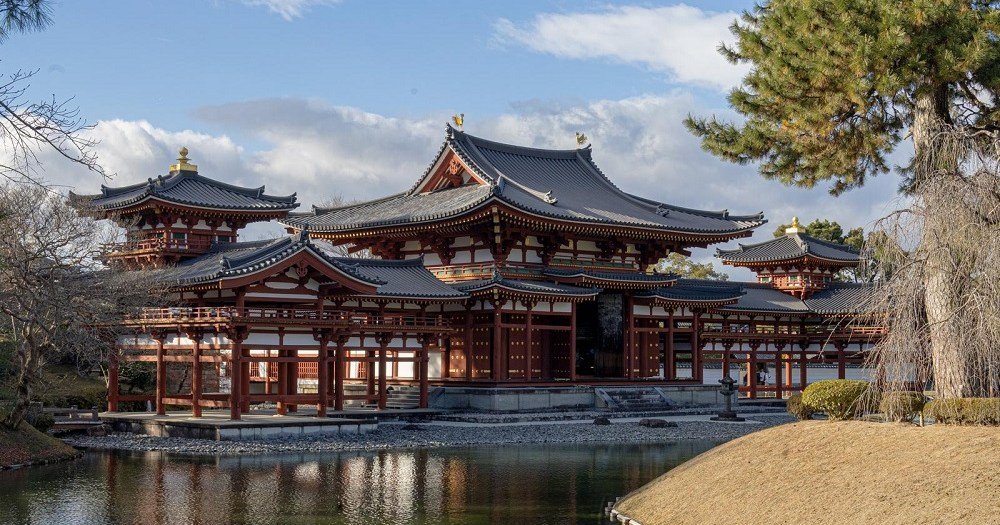
Kyoto may be the historical heart of traditional Japanese culture, but current conditions are making it a less attractive placer for locals to visit.
Aside from maybe Tokyo, there’s no other city with more of a “must-visit” reputation than Kyoto for travelers to Japan, who flock to the country’s former capital to tour its historic temples, beautiful gardens, and otherwise get a glimpse of Japanese traditional culture. For a growing number of Japanese travelers vacationing in their home country, however, Kyoto is becoming a city they feel like they can leave off their itinerary.
Tokyo-based data/research organization Blogwatcher recently released the results of its analysis of travel patterns during Japan’s 2025 Golden Week holiday season, which straddled the end of April and beginning of May. Examining mobile phone location data, Blogwatcher determined that there were significant drop-offs in the number of Japanese visitors to five of Kyoto’s most famous sightseeing spots compared to just two years prior. Japanese visitors to Fushimi Inari Shrine plummeted by 40.4 percent compared to 2023, and both Kiyomizudera Temple and Kinkakuij/the Golden Pavillion’s numbers of Japanese visitors fell by roughly 25 percent. Shimogamo Shrine and Byodoiin Temple both had slight upticks in Japanese visitors in 2024, but reversed course in 2025 and had approximately 10 percent fewer domestic visitors than they’d had at Golden Week in 2023.
▼ Byodoin’s Phoenix Hall is so famous that it’s even depicted on the 10-yen coin.
It’s not hard to imagine what’s discouraging Japanese travelers from visiting Kyoto. The weak yen continues to make Japan more affordable for foreign travelers to visit than it’s been in a generation, and with so many of them including Kyoto in their Japan travel plans, the city’s attractions are crowded and its hotels expensive. The Kyoto Tourism Association’s data shows that through the first five months of this year, the average price per night for a stay in a Kyoto hotel is around 50 percent more than it was just two years ago. Those cost increases are relatively easy for inbound foreign visitors to soak up as they leverage the favorable exchange rate, but for Japanese travelers, who are already getting hit in the wallet by rapidly increasing consumer prices without equivalent wage increases, the idea of paying inflated prices to go someplace clogged with tourists is no doubt feeling like a less enjoyable way to spend their diminished disposable income.
However, as Kyoto is looking like a less attractive destination for Japanese travelers, they’re becoming more drawn to Nara. Blogwatcher tracks domestic visitor numbers for 33 of Kyoto Prefecture’s top temples, shrines, and historical tourism sites, and 37 in Nara Prefecture. During Golden Week in 2023, Japanese travelers showed an overwhelming preference for Kyoto, with its top sights receiving nearly 70 percent more Japanese visitors than Nara’s. In 2025, though, more Japanese travelers visited Nara’s major sights than Kyoto’s.
Japanese visitors to major temples, shrine, and historic sites during Golden Week
● Kyoto 2023: 746,000
● Nara 2023: 446,00● Kyoto 2025: 559,000
● Nara 2025: 561,00
It could be argued that Japan is still in the middle of the initial wave of its inbound tourism boom. Residual pent-up international travel demand and the weak yen are doing a lot to make the country a trendy and affordable choice for visitors from abroad, but it’s still not entirely clear whether their intense interest is going to be permanent. As a result, it’s likewise too early to say whether huge crowds and high prices have turned Japanese people off to the idea of traveling to Kyoto entirely, or if they’re simply putting their Kyoto plans on the back burner for the time being. After all, if the shrines and temples you’re going to see are already centuries old, holding back for a year or two to see if the tourism congestion has settled down doesn’t seem like all that long of a wait. For the time being, though, it really does look like Japan’s travelers aren’t nearly as excited about the idea of visiting Kyoto as they were just a short while ago.
Source: TBS Cross Dig with Bloomberg via Golden Times
Top image: Pakutaso
Insert image: Pakutaso
● Want to hear about SoraNews24’s latest articles as soon as they’re published? Follow us on Facebook and Twitter!
Destinations & Things To Do
The Bodacious Bigelow’s (ECT Day 201)
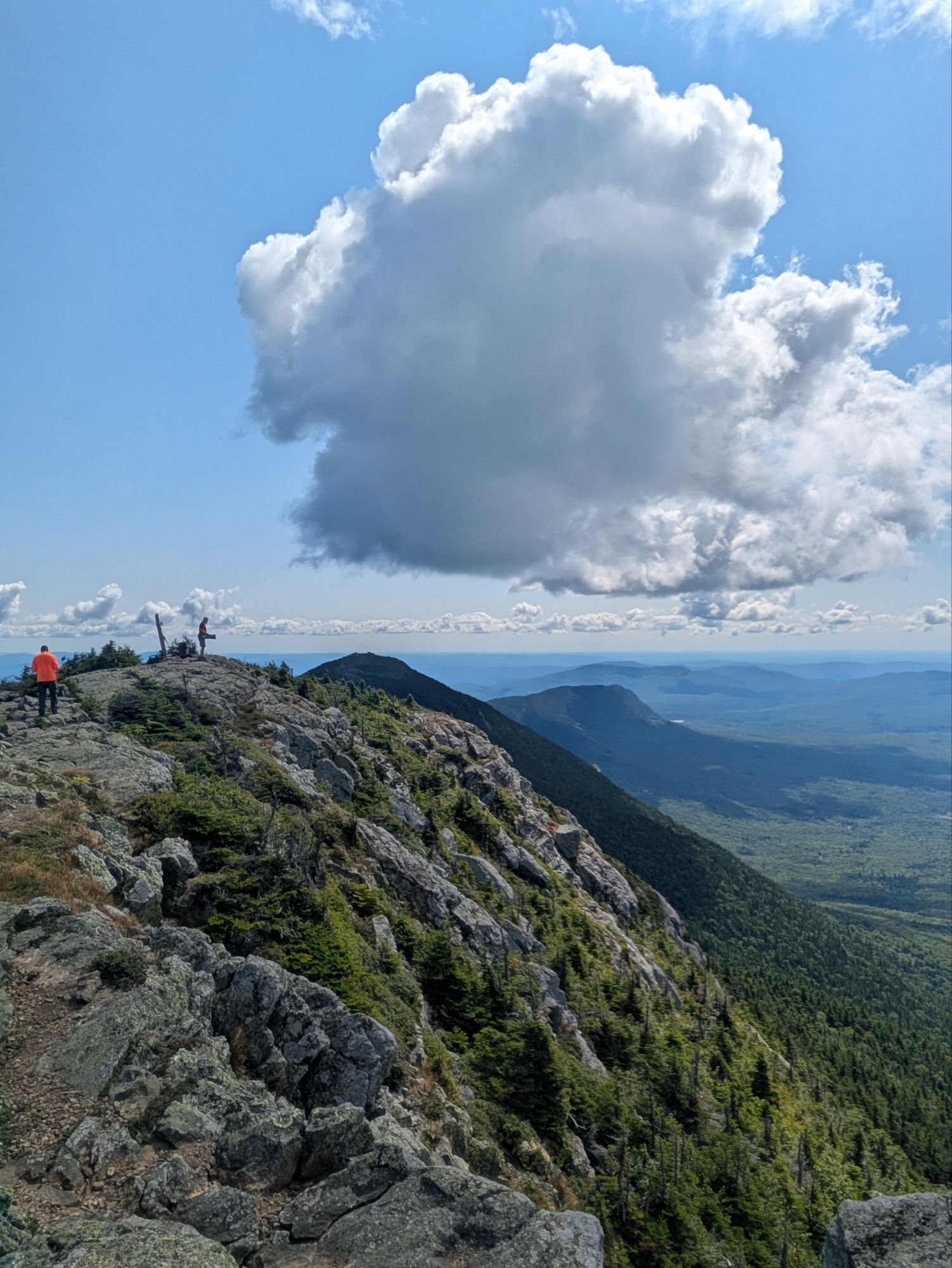
- Hiked Today: 21.1 miles
- Appalachian Trail (2,012 – 2,033.1)
- Total Hiked: 3,966.3 miles
- Total Paddled: 99.5 miles
Weather: 52 – 75°F, mostly sunny, some clouds
Elevation: 1,150 – 4,145 feet
Cranberry Stream Campsite to West Carry Pond Shelter
For some reason the charge on my power bank seemed to diminish quicker than normal over the past couple days. I still have a few days to go before my next stop, so today I went into extreme battery saving mode. I even went as far as turning my phone off whenever possible, but afterwards I wasn’t sure if that was helping or causing it to drain just as quick/even more quick.
Thus, you’d expect not as many photos for today, but I struggled to stop myself. It was an all-time wonderful day and that causes me to want to have the phone out documenting all the fun stuff.
Bodacious: “very large or important, or something people enjoy or admire.”
– from the Cambridge Dictionary (https://dictionary.cambridge.org/us/dictionary/english/bodacious)
Leaving camp, straight away I was hiking up. The end of the day yesterday was more downhill and flat-ish and set me up at the foot of the Bigelow’s. The climb was ok, definitely lots of trippy roots but not as steep as some other spots…
The photo above was taken right before popping out to a marvelous viewpoint. I got a kick out of the giant monolith type boulder and then was blown away when the view of Horn Pond and The Horns presented itself…
I thought the trail took me over both of the Horns, but just South. To get to North Horn it was a 0.2 mile side quest. I stuck to the white blazes and got some views looking back on the way up.
Atop South Horn there was another spectacular overlook and I sat down for second breakfast. Hikers Bookends and Ain’t Right joined too. The weather was once again premium and I soaked up the moment…
The next few miles were top-notch. Some of my favorite of the entire Appalachian Trail. It was down and then up to a ridge line topping the West Peak of Bigelow Mountain and then Bigelow Avery Peak. The massive Flagstaff Lake sat to the north and demanded my attention.
Sitting with the other hikers at this summit, I said something along the lines that this is more than a view, it’s a whole experience. What I was trying to get across was that it was 360 degrees, a whole scene, and as much as I try with photos and vids, being there in person is the only way to sense the grandeur. Sorry y’all. But alas, I did try to showcase the beauty nonetheless.
Before heading down into the trees again, I got a view of Little Bigelow Mountain where I’d be heading.
The rest of the day’s hike was less glamorous, but after Little Bigelow it was more cruisy. I came close to getting a good slow-motion vid of this giant Pileated Woodpecker, but pretty blurry…
Around 6:00 pm or so, I was internally thinking maybe I’d be able to push on further than my original goal. It never happens haha. Especially when I’m stopped for wonderful trail magic! Walking into a parking area, which later I’d find out was not even on the trail, I met Lebowski. He’s a 2021 (?) AT hiker that planned to set up the next day and chef tasty foods up for hikers. For me, he offered a beer, a chair, and some honey buns! It was nice resting and chatting with him.
Moving on from that, I was thinking I had about 6 miles of flat left to hike. The mileage estimate was accurate, but I underestimated the grade and there was not one, but two blips uphill I had to get over. Hence, I was exhausted and spent like normal by the time I reached camp at West Carry Pond Shelter.
I filled up with water straight from the lake. It was post-7:00 pm arriving here at West Carry Pond. Again with the ponds though… looks like a lake to me folks. Will the madness never end?
In my tired and hungry state, finding this glorious sight at the shelter was almost too much for me…
I mean, don’t they look like the most pristine and delicious chocolate chip cookies ever? I am a cookie monster and devoured several in quick succession.
I was the only one at the shelter and I still went for the tent. I set up and ate in record time. Going back to the cookies though… I didn’t feel right leaving them out for the bears to munch on. So, I ate them all! J.k., j.k. haha. I did eat a lot, but at least for the evening, I kept them safe by putting the whole Tupperware in my food hanging bag…
The loons sang me a lullaby as I drifted off to sleep. What a day! Another in the top 201 of the ECT I’d say 😎.
Thanks for joining on the journey! It means a lot that you took the time to read up on these adventures. If you want to help kids get access to the outdoors, a cause that means a lot to me, please help me in supporting Outdoors Empowerment Network! The “Tip Author” button is a direct link to my fundraising page. Y’all are truly amazing. Thank you!
This website contains affiliate links, which means The Trek may receive a percentage of any product or service you purchase using the links in the articles or advertisements. The buyer pays the same price as they would otherwise, and your purchase helps to support The Trek’s ongoing goal to serve you quality backpacking advice and information. Thanks for your support!
To learn more, please visit the About This Site page.
-

 Brand Stories2 weeks ago
Brand Stories2 weeks agoBloom Hotels: A Modern Vision of Hospitality Redefining Travel
-

 Brand Stories2 weeks ago
Brand Stories2 weeks agoCheQin.ai sets a new standard for hotel booking with its AI capabilities: empowering travellers to bargain, choose the best, and book with clarity.
-

 Destinations & Things To Do2 weeks ago
Destinations & Things To Do2 weeks agoUntouched Destinations: Stunning Hidden Gems You Must Visit
-

 Destinations & Things To Do1 week ago
Destinations & Things To Do1 week agoThis Hidden Beach in India Glows at Night-But Only in One Secret Season
-

 AI in Travel2 weeks ago
AI in Travel2 weeks agoAI Travel Revolution: Must-Have Guide to the Best Experience
-

 Brand Stories1 month ago
Brand Stories1 month agoVoice AI Startup ElevenLabs Plans to Add Hubs Around the World
-

 Brand Stories4 weeks ago
Brand Stories4 weeks agoHow Elon Musk’s rogue Grok chatbot became a cautionary AI tale
-

 Brand Stories2 weeks ago
Brand Stories2 weeks agoContactless Hospitality: Why Remote Management Technology Is Key to Seamless Guest Experiences
-

 Asia Travel Pulse1 month ago
Asia Travel Pulse1 month agoLooking For Adventure In Asia? Here Are 7 Epic Destinations You Need To Experience At Least Once – Zee News
-

 AI in Travel1 month ago
AI in Travel1 month ago‘Will AI take my job?’ A trip to a Beijing fortune-telling bar to see what lies ahead | China



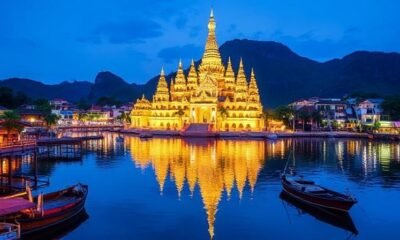

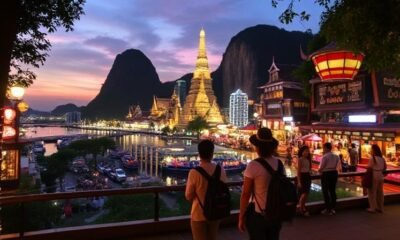

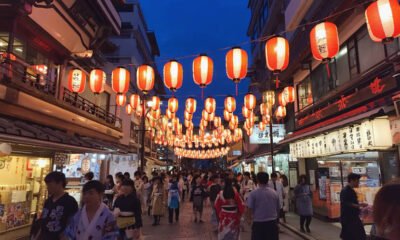

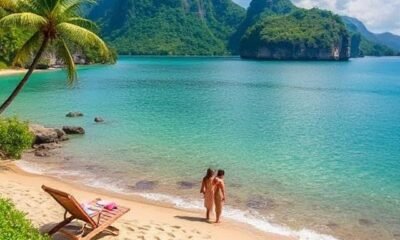



You must be logged in to post a comment Login